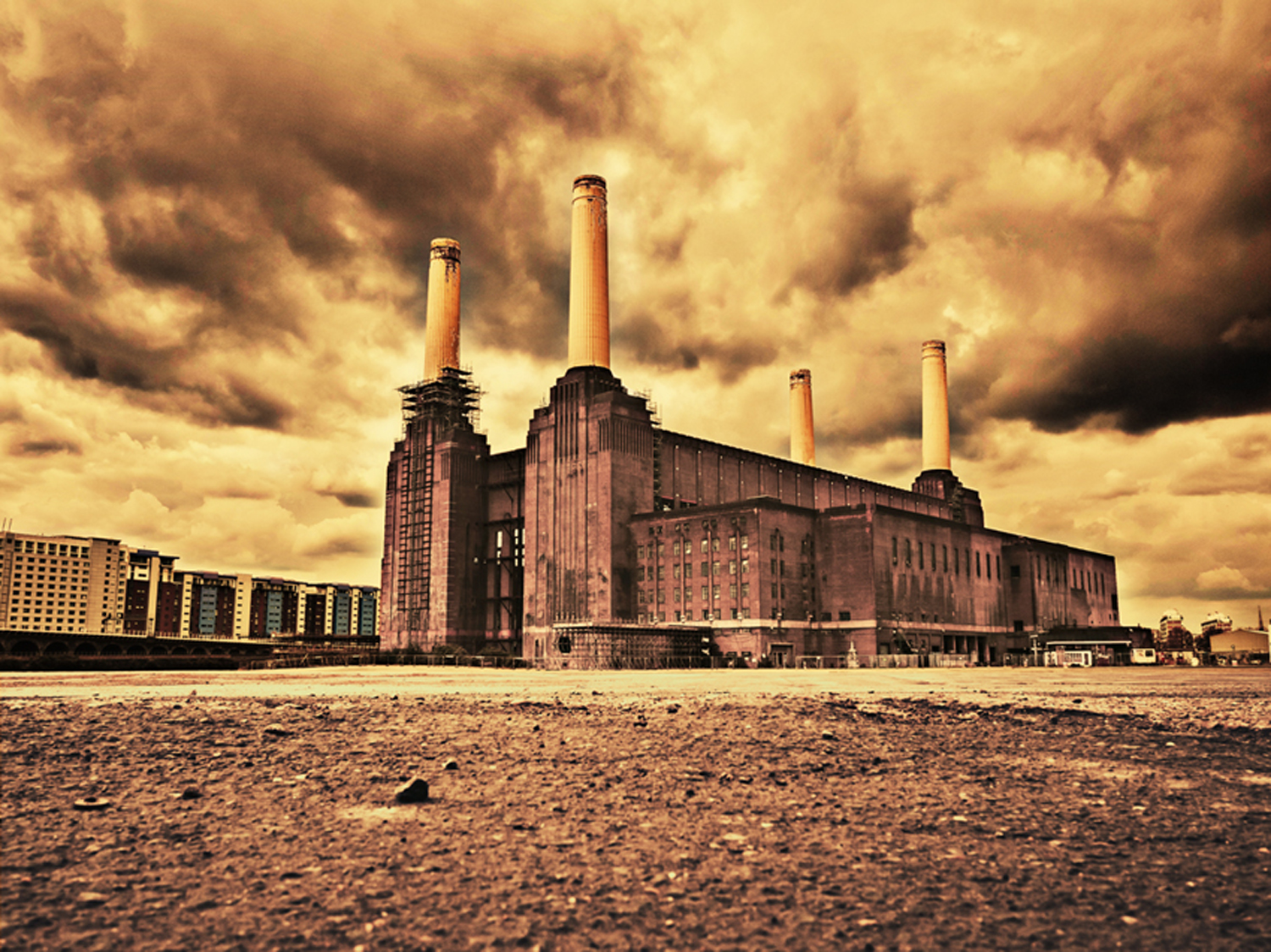Post
REPORT | "The Ruin of London": Battersea Power Station and Nine Elms
3 Oct 2016
On 20 September London Society members gathered to learn about the Battersea Power Station development and how its story fits with that of Nine Elms and London as a whole. Owen Hatherley (A Guide to the New Ruins of Great Britain, The Ministry of Nostalgia) and Peter Watts (Up in Smoke: The Failed Dreams of Battersea Power Station) talked us through its history, asking how its redevelopment will change Nine Elms, and the extent to which it is indicative of the play between property, power and politics in London today. Saul Collyns reports.
Watts’ motivation to delve deeper into the story of Battersea Power Station arose from a curiosity shared by many Londoners: Why had the numerous developments announced, seemingly on a two year cycle, never materialised, and what was going wrong?
Battersea Power Station, child of architect Giles Gilbert Scott (also known for structures such as Liverpool Cathedral and Waterloo Bridge), fully opened in 1935. According to Watts, its construction was more controversial than the Garden Bridge, with opponents including the Archbishop of Canterbury and the King. Throughout the 1960s it was notoriously known as a ‘polluting monster’, impregnating the surrounding area with sulphur smoke, the smell of which deterred locals from adjacent Battersea Park. Nevertheless, by the 1970s the power station had gained popularity, becoming the face of a ‘real’ and ‘authentic’ London, even appearing on the front cover of Pink Floyd’s album Animals.
The power station closed in 1983, and Watts described the proceeding story as one of ‘greed, crime, lust, envy and betrayal’. Plans to demolish it were scuppered when the building was listed in 1980, and Wandsworth Council, driven by the desire to create jobs, eventually sold it to John Broome, the then owner of Alton Towers, for £1.5 million (which Watts noted wouldn’t even buy a single apartment in the current development). Broome planned to transform the power station into a mini theme park, but he didn’t have enough money to pay for the work needed to stabilise the building - a problem encountered by others who later acquired the site.
One owner, an Irish property developer, enlisted architect Viñoly (of the notorious ‘Walkie Talkie’ building) to draw up a masterplan, which is still in place despite the development now being owned by a Malaysian Consortium. It features a shopping centre (akin to several past proposals) as well as the luxury accommodation now synonymous across Nine Elms and London. Watts noted that Wandsworth Council, which approved the development, is strongly pro-developer and places utmost trust in markets, yet he lamented it as a depressing example of much of the unimaginative development underway in London today. He questioned whether the building should even have been listed, noting that the (smaller) Bankside power station (another Gilbert Scott constructions) was never listed and has been successfully reborn as Tate Modern. Perhaps, he concluded, it should have been left as it was - an elegant piece of industrial art for all to see and admire.
For Hatherley, current Battersea Power Station and Nine Elms developments are natural given the expansion of ‘housing estates for the staggeringly wealthy’ across from St. George’s Wharf in Battersea, a phenomenon occurring in several parts of London. The development in Nine Elms has gone through several phases: the municipal housing that sprung up in the early twentieth century in the attempt to provide suitable housing for the urban poor led to the area having one of the highest housing densities in London by the 1930s, although by the 1960s much of it was highly criticised for creating severance and failing to foster communities. By the mid-1980s cul-de-sacs were in fashion, again transforming the area along with developments such as New Covent Garden Market.
Hatherley believes that three factors were responsible for the return of high-rise development to the area. The first was Terry Farrell’s MI6 complex at Vauxhall, the style of which influenced the second factor, St. George’s Wharf and its accompanying towers. Hatherley considers that St. George’s Wharf’s poor architectural quality is also a result of Labour Party housing policy at the time, which regarded London as too suburban and perceived a need for new ‘metropolitan’ developments that would start along the riverside and make London more akin to other European cities such as Barcelona, Stockholm or Rome (a policy that has led to London being named ‘Dubai on Thames’ by many). Thirdly, the relocation of the US Embassy to Nine Elms attracted the super-rich to the area, who feel safer due to accompanying fortresses, such as the moat, which will keep protesters, the public, and even Londoners out. More recently the ‘Dubai on Thames’ aesthetic has been rejected in favour of building predominantly with bricks, although Hatherley lamented the poor architectural quality of many of the buildings.
In a brief Q&A Hatherley was asked whether the process he had just described can be attributed as the result of a tradition of no planning, although Hatherley stressed that in many ways government policies had encouraged developments in Nine Elms, such as Wandsworth Council’s supreme belief in the power of the market or the Labour Party’s housing policy. He noted that many “use-less” buildings are maintained, such as the Tower of London, saying he fails to see why Battersea Power Station couldn’t have been maintained as well.

